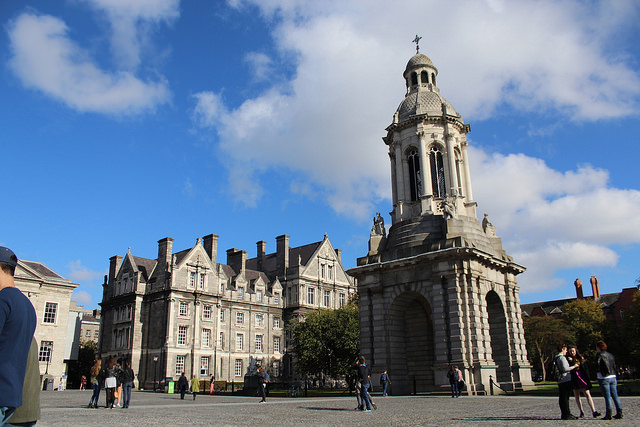A new conservation plan, which would see the creation of a set of rules and principles around future campus development, is being considered by Trinity.
The new plan would see a more formalised process to regulate the use and growth of Trinity’s campus, and would force new developments to be assessed for their impact on Trinity’s historic campus.
Trinity is currently developing an Estates Strategy, which will assess how Trinity’s campus can be developed and improved in line with Trinity’s future needs. Despite being one of the oldest universities in the world, Trinity currently has no formal written document that outlines a strategy for conserving the most historic areas of campus.
At a meeting in College last Wednesday, attended by both staff and students, the Bursar, Prof Veronica Campbell, said that “some consideration of the issues around conservation planning should really come to the fore” as part of the Estates Strategy.
Paul Roberts, a director from Turnberry Consulting, a consulting company helping Trinity develop its Estates Strategy, spoke at the meeting. Commenting on the evolution of historical campuses, he described Trinity as having an “unparalleled university system of architectural excellence”.
Speaking to The University Times, Campbell said a key component of the Estates Strategy needs to be a “conservation management plan”. Such a plan, she said, would allow Trinity to understand the facilities it has, the infrastructure between buildings and how to protect it in the future.
In April, The University Times revealed that a report, conducted by Turnberry, said Trinity was not using the campus to its “maximum potential”.
A conservation plan has long been considered by Trinity, yet has never been developed. Speaking to The University Times, Dr Christine Casey, a senior lecturer in architectural history in Trinity said, despite College’s interest, “the problem is money – it’s an expensive process”.
Casey said a conservation plan would help inform Trinity’s planning processes in the future, as consultation with internal and external experts in the formation of a strategy could prevent repeat occurrences of projects having planning permission rejected. In July, An Bord Pleanála refused permission for Trinity to progress with the development of the Oisín House accommodation project.
“There has been a sense within College that we should be pushing for the tallest buildings we can get. In both cases they were batted back, and they cost a lot of money. It’s expensive to revise those types of projects”, Casey said.
When asked about the procedure for developing a plan and how long it would take, Casey pointed out the danger of hiring “extremely expensive consultants who would take a long time” and then produce “a very large and unwieldy document”.
She said that comparable projects, such as a conservation plan for the Mansion House, had taken well over a year to complete. “You’d need a forum of people who’d come together and look at the best way to do it”, added Casey.







